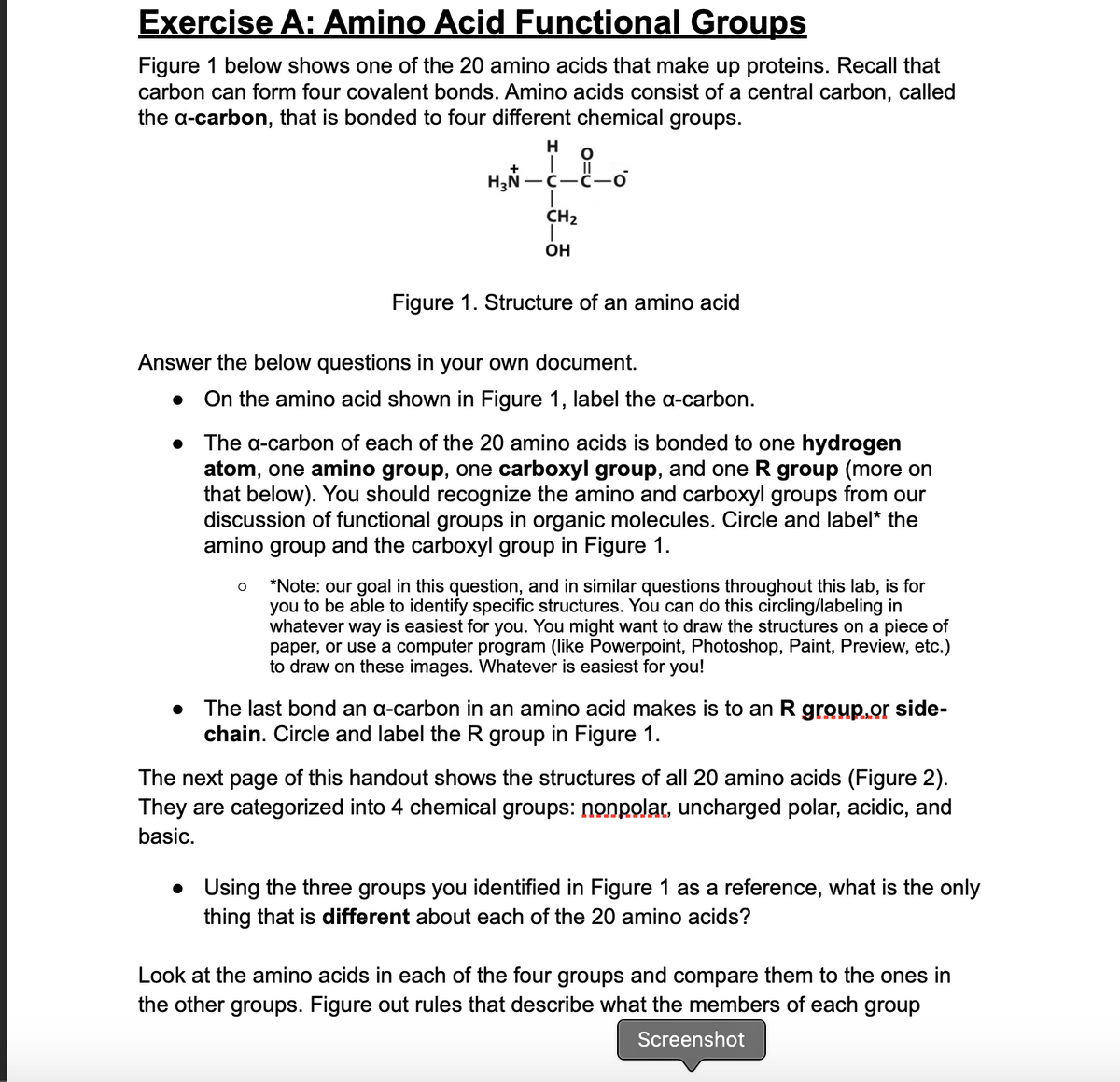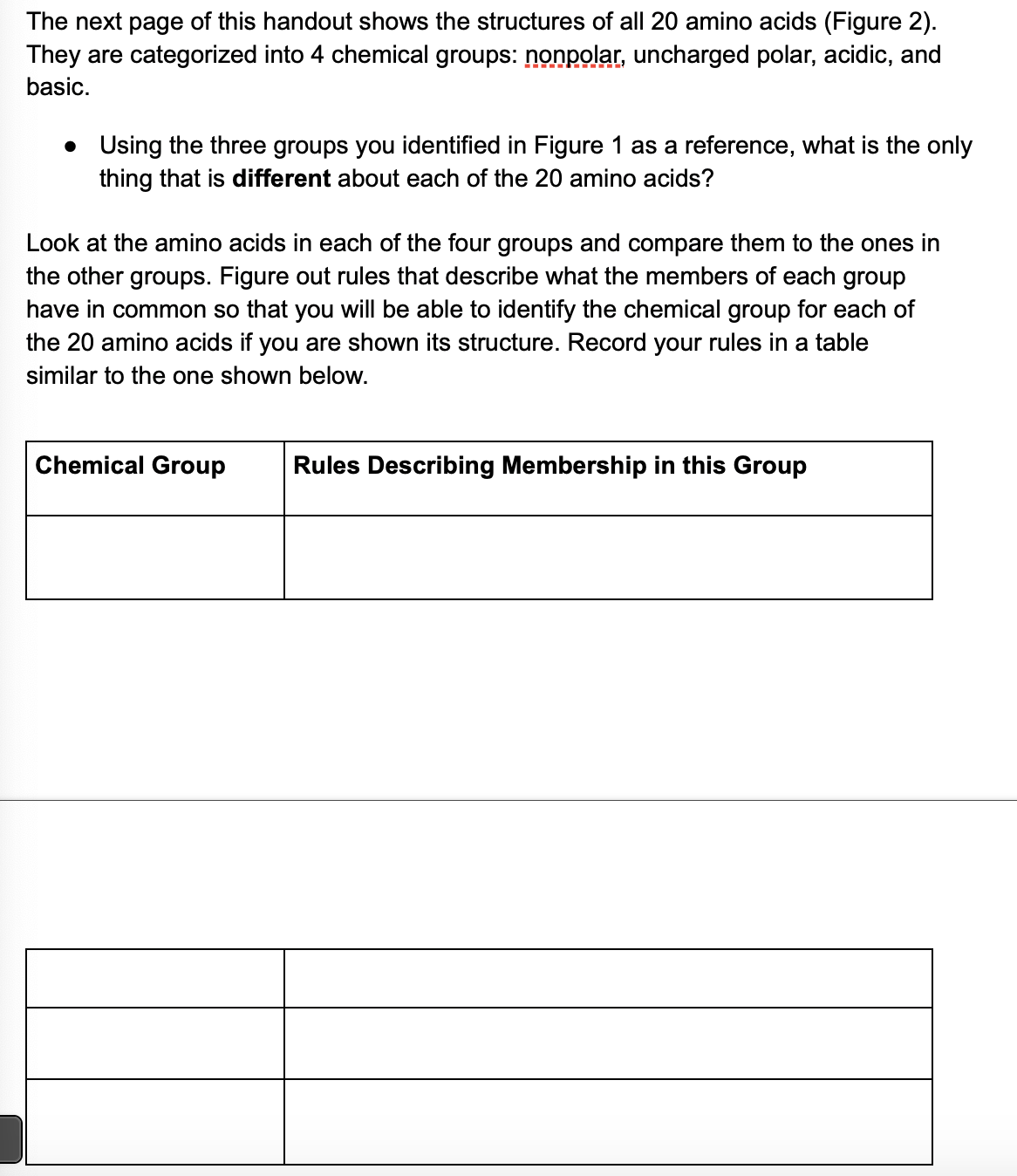Figure 1 below shows one of the 20 amino acids that make up proteins. Recall that carbon can form four covalent bonds. Amino acids consist of a central carbon, called the a-carbon, that is bonded to four different chemical groups. CH2 OH Figure 1. Structure of an amino acid Answer the below questions in your own document. • On the amino acid shown in Figure 1, label the a-carbon. The a-carbon of each of the 20 amino acids is bonded to one hydrogen atom, one amino group, one carboxyl group, and one R group (more on that below). You should recognize the amino and carboxyl groups from our discussion of functional groups in organic molecules. Circle and label* the amino group and the carboxyl group in Figure 1. *Note: our goal in this question, and in similar questions throughout this lab, is for you to be able to identify specific structures. You can do this circling/labeling in whatever way is easiest for you. You might want to draw the structures on a piece of paper, or use a computer program (like Powerpoint, Photoshop, Paint, Preview, etc.) to draw on these images. Whatever is easiest for you! • The last bond an a-carbon in an amino acid makes is to an R group.or side- chain. Circle and label the R group in Figure 1.
Nucleotides
It is an organic molecule made up of three basic components- a nitrogenous base, phosphate,and pentose sugar. The nucleotides are important for metabolic reactions andthe formation of DNA (deoxyribonucleic acid) and RNA (ribonucleic acid).
Nucleic Acids
Nucleic acids are essential biomolecules present in prokaryotic and eukaryotic cells and viruses. They carry the genetic information for the synthesis of proteins and cellular replication. The nucleic acids are of two types: deoxyribonucleic acid (DNA) and ribonucleic acid (RNA). The structure of all proteins and ultimately every biomolecule and cellular component is a product of information encoded in the sequence of nucleic acids. Parts of a DNA molecule containing the information needed to synthesize a protein or an RNA are genes. Nucleic acids can store and transmit genetic information from one generation to the next, fundamental to any life form.


Trending now
This is a popular solution!
Step by step
Solved in 2 steps with 1 images






